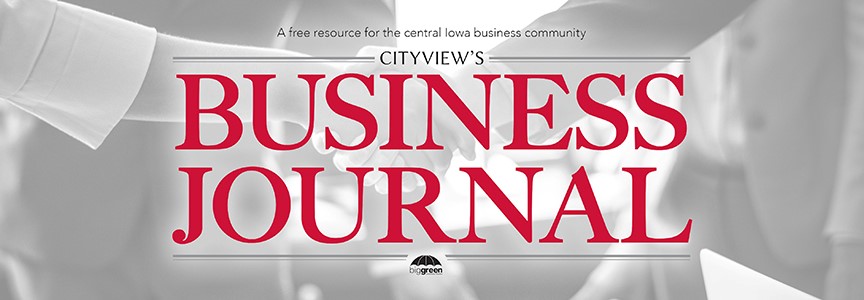By Melissa Walker
Buried in the daily grind of managing a business’ operations and overseeing employees is the business owner’s decision of whether to offer retirement savings to employees.
“I think people get scare of retirement plans as a business owner because you think it’s going to be difficult and time consuming, but there are several options that require minimal or no investment from the business,” says Jan Pautvein, a financial adviser with Edward Jones, who has been assisting small and midsize businesses with retirement planning for almost 20 years.
Americans will need 70 percent to 90 percent of their preretirement income to maintain their current standard of living once they retire, according to the U.S. Department of Labor.
Employers play an important role in helping their workers save for the future; however, only 34 percent of workers at small businesses, compared with 64 percent of all employees in medium- and large-size firms, are covered by an employer retirement plan, according to the Labor Department.
Experts say retirement plans not only are attractive to prospective and current employees, but they also allow the employer to save for his or her own retirement while receiving tax advantages.
If you’re a business owner on the fence, here’s what to consider and how to get started:
1. Seek expert advice
Business owners have the power to make the decision when it comes to their company’s retirement plan, but they need professionals to provide guidance.

Fred Bell, a certified financial planner with Bellwether Financial Advisers in West Des Moines, recommends business owners get started with the help of their company’s certified public accountant, if the company has one, and a financial adviser. The two can work together to form a plan that best meets the company’s goals and maximizes the allowable contributions with the most tax benefit to the business.
“That’s when having a good consultant can really help,” says Bell, who has worked in the individual and small business retirement planning business since 2002. “There are quite a number of firms out there that specialize in selecting or helping the employer select the most advantageous plan.”
A retirement specialist expert also will educate employees about the plan’s rules and their investment options; help owners meet fiduciary responsibilities; keep employers up to date on Labor Department regulations; and ensure the appropriate annual forms are filed with the U.S. government, says Rod Potratz, president of Stonebridge Financial Advisers in West Des Moines.
Business owners also need to consult the advice of a tax accountant or professional to learn the specific details of which retirement plan contributions and costs are tax deductible.
2. Consider your goals in developing a plan
Business owners are not required to offer retirement plans to their employees; however, there are multiple benefits on both the employee side and the employer side to doing so.
“Many find it to be advantageous for employee retention,” Bell said. “It’s a pretty known (fact) that having a good package of benefits helps employee retention because the employee is better able to take care of the employee’s personal financial needs.”
The impetus behind most employers’ decision to offer a retirement plan starts with a desire to save money on taxes and generate money that is tax deferred, says Brad Heyer, a financial planner with Edward Jones in Waukee.
Pautvein says there are tax benefits to both the employer and the employee: Employers can deduct contributions as a business expense, and employees can defer the taxes on their earnings of the money they put toward retirement, she says.
Retirement plans also allow the business owner to secure his or her own retirement.
Even if a business owner doesn’t want to contribute to a retirement plan, they should still allow their employees to save for retirement through payroll reduction, Potratz says.
“Almost all retirement plans are garnered toward letting the employee save on their own for retirement,” he says. “That should be the main idea as to why an employer should put one in place: I care for my employees, and I want to aid them in helping them save for retirement.”
These plans allow employees to save more money than they would be able to on their own.
“It’s nice to have it taken out of your check before you even receive it,” Potratz says.
These types of plans put the responsibility of saving on the employees because they make the decision about whether, when and how much they contribute.
There are many different types of retirement plans employers can choose to offer depending on the size and goals of the plan. Business owners need to consider their intent behind the plan: whether it’s to provide additional benefits to employees, provide retirement savings for themselves and/or promote saving for their employees.
“The first thing is: What is the business goal in setting up the retirement plan?” Bell says.
One factor to consider may be whether the employer intends to expand his or her business, and whether they’ll be prepared to offer retirement benefits to a larger group of employees.
For example, starting out with a SIMPLE IRA (Savings Incentive Match Plan for Employees Individual Retirement Account) might be a good option, but the plan is limited to 100 or fewer employees, so the business owner would need to be prepared to switch plans in the future.
3. Know what plan options are available
Most private-sector retirement plans are either IRAs, defined contribution plans or defined-benefit plans, according to the U.S. Department of Labor.
According to US News and World Report, business owners should consider the pros and cons of any retirement plan, and they need to know what plans for which they are eligible.
Plans range from payroll deduction in which the employer gives the employee the vessel to orchestrate his or her own savings to plans where the employer matches a certain percentage of the employee’s salary each year toward retirement savings to plans where the employee is guaranteed a specific amount of payment upon retirement.
Bell says a Simplified Employee Pension plan can be a good option for a small business because of its simplicity. The rules on contributions are simple, fixed and based on a percentage of the employee’s income. The plan is specific in terms of how much the employer is required to contribute.
SEPs are attractive to small business owners because they have low start-up and operating costs. Generally, the employer must make a uniform percentage contribution for each employee, but contributions are not required every year. This allows business owners some flexibility in times when their income may vary.
A SEP plan allows money invested to grow taxes deferred, Heyer says. Then as the business owner or employee gets closer to retirement, a financial adviser will help him or her on how to turn the retirement savings into a stream of income.
A SIMPLE IRA is oftentimes used for businesses with 100 or fewer employees. Employees are able to contribute a percentage of their salary each paycheck, and employers either match the contribution dollar for dollar up to 3 percent of the employee’s compensation or make a fixed contribution of 2 percent even if the employee chooses not to contribute their own money.
Most small businesses choose to implement a SIMPLE IRA because it is easy to maintain, and the business owner can participate with few or no stipulations. There’s no or minimal upfront cost, it can be maintained by the employer or the record-keeping service, and it requires fewer forms that need to be filled out and submitted to the IRS, Pautvein says.
“It’s nothing that’s going to be too time consuming on the employer’s behalf,” she says.
Other retirement account options include profit-sharing and 401(k) plans. Potratz says 401(k) plans are the most popular among business clients in his 22 years of experience.
In a profit-sharing plan, employers contribute to their employees’ retirement accounts at their discretion. Based on the plan’s terms, employers make not need to contribute a set amount each year.
An estimated 53 million U.S. workers participate in 401(k) plans that have assets of about $4 trillion, according to US News and World Report. Such plans have become a popular retirement tool for small businesses. Employees can choose to defer a portion of their salary into their 401(k) account, which allows them to reduce their salary before taxes, or deferrals can be made after tax, depending upon the plan type. Employers can make matching or percentage contributions.
Defined benefit plans are beneficial to employees because they know the fixed amount of benefit they will receive and often receive a greater benefit than with other types of retirement accounts. The amount can be based on a set percentage of pay multiplied by the number of years the employee worked while the plan was offered. Employers generally contribute and deduct more each year in these types of plans, which also tend to be more complex and more expensive to establish and maintain. The employer may have contributed enough money during those years to fund the promised benefits, or the business will have to fund the allocation post-retirement.
4. Choose a plan that best suits business’ needs
Once an employer has the goals outlined and knows the options available, the owner should select a plan that is suitable for his or her business and personal goals. A plan may look good if the employer is only considering it for him or herself because it can allow maximum savings for retirement; however, the employer needs to read the fine print and make sure they aren’t required to offer the exact same benefits to all of their current and future employees.
Plans range from those for individual owner-operated businesses to those with more than 100 employees. Plans can overlap, so a business owner will need to compare options.
Some plans are easier and cheaper to set up and maintain than others with little to no administrative costs and simple reporting requirements to the IRS. Employers need to know what their obligations to their employees are with each plan. Some plans require no contribution from the employee while others require a specific match or percent contribution based on the employee’s compensation.
Brandy Jensen, owner of Hawkeye Breeders in Adel, chose to implement a SIMPLE IRA for her business in 2002. She says it has been easy to implement and maintain.
“We can make the rules about who gets to do it and can’t do it,” she says. “I like that about it. With small business, you can’t always afford to do a lot of things with your employees.”
Jensen’s accountant recommended a plan for tax savings, and she thought it would be an added benefit to employees at a reasonable expense.
“We thought it was something we could easily do without a whole lot of money,” she says.
Business owners also need to take into account how many employees and under what employment status conditions they will have to serve with the retirement plan. Some plans have no requirements, while others must be offered to all employees who meet an age and income requirement.
Another option to consider is how the business will pay for the retirement plan during a possible recession or if revenues fall. Plans such as a solo 401(k) allow employers to change their contribution level on an annual basis.
This type of 401(k) account for a self-employed individual or the owner of a very small business can be a great way to boost retirement savings.
5. Learn the upfront, ongoing expenses
One reason small business owners cited for not offering a retirement plan to their employees was the high costs associated with set-up and administration of the plan, according to the Labor Department.

Potratz, with Stonebridge Financial, agrees that one of the top questions business owners have about retirement plans is the cost associated with implementing one. However, he says costs can be minimized through selecting a plan that is more focused on letting employees save on their own for retirement, and on selecting a plan that best meets the needs of the individual business.
An employer who makes a large income and has a handful of employees may choose a plan in which he or she contributes a higher percentage into retirement accounts. On the other hand, the owner of a manufacturing company may have to select a plan where he or she contributes less because the company has 200 employees.
“The number of employees a company has can impact the type of plan a company puts in,” Potratz says.
Bell, with Bellwether Financial Advisers, says the size of the plan and complexity of a retirement plan contributes to the expense for the business owner.
There are upfront and ongoing expenses for retirement plans: 401(k) plans are a little more expensive, while a SEP has very minimal cost, he says. Plans can be started for as little as $50 for a small business owner who only wants to create a retirement plan for him or herself and their family. Other plans can cost more than $1,500 upfront. Some of these upstart costs are currently refundable through a tax credit.
Employers can also expect to pay ongoing administration costs and fees for any legal and tax compliance issues that may arise.
6. Explain the employees’ responsibilities
A retirement account doesn’t just fall on the shoulders of the business owner. Some plans require employees to deduct their wages from their paycheck in order to contribute to the plan or allow them to contribute up to a certain amount toward their retirement.

The incentive of offering a retirement plan to employees may encourage them to work harder, specifically in cases where a company operates a SEP. The more the business profits, the more the employer contributes.
Just as businesses can fall into hard times, employees may run into financial hardships. In these cases, employees may have the ability to withdrawal or take loans from their retirement before they are vested in the retirement account, according to the Labor Department. However, those fees and penalties fall on the employee.
“Vested” means ownership of the plan. Employees may be vested in their retirement plans in different levels, depending upon whether the money was contributed by the employee or the employer. An employer cannot take back any of the money from an employee who is 100 percent vested in his or her plan, according to the IRS. Amounts that are not fully vested can be taken back by the employer if, for example, an employee does not work his or her required number of hours during a certain time period.
For all types of IRA-based plans, all contributions are vested immediately, and an employee can withdraw money at any time, subject to federal income taxes. Early withdrawals may result in the person having to pay additional taxes. Those taxes can be high — with a SIMPLE IRA, the penalty could be 25 percent of the account’s balance. Employees are not permitted to take loans from their IRA-based retirement account.
Defined contribution plans operate differently. For 401(k) plans, employees’ personal contributions are immediately vested 100 percent. The employer contribution varies according to the plan’s terms. Employees are only allowed to withdrawal money from the plan after a specified event occurs such as retirement or if the plan were to be terminated. The withdrawals are subject to federal income taxes. Employees may be permitted to take a hardship withdrawal against their retirement account but would be subject to additional taxes.
7. Reap the benefits
In addition to saving the maximum amount of money a business owner can for his or her retirement, a number of retirement programs also provide tax advantages both employer and employee. Plus, money within the retirement plan grows tax free.

Business owners also should make sure they set up their retirement plan at a time of year where their contributions benefit them the most for that tax year. This can help an employer shelter some of their income if he or she needs to reduce their tax bill. The expense of the contributions to manage and set up a retirement account can be written off as business expenses, depending upon the plan.
If a business owner operates more than one business, he or she will want to ensure a plan is selected where contributions to a retirement account for that one business doesn’t limit the person’s ability to save through a separate retirement account he or she may have. For example, contributions to a SIMPLE IRA count against the limit for the person’s 401(k) account, which can limit his or her overall retirement savings options. However, contributions made into a SEP IRA do not affect the person’s ability to contribute to another retirement account.
Self-employed business owners may consider a defined-benefit plan. While they’re less common with big businesses because of the expense associated with them, they can be good for small businesses because they allow the owner to save more money for retirement than they would be able to otherwise and to write off the plan contributions as a business expense. If the business owner consistently has money to save, he or she could save more than $100,000 a year for retirement. Defined-benefit plans also can be combined with a Solo 401(k) or a SEP IRA to allow for even more savings.
Small employers may be eligible for a tax credit that will enable them to claim a credit for part of the start-up costs of a retirement plan, according to the U.S. Department of Labor. The credit is 50 percent of the set-up and administration cost of the plan, with a maximum of $500 per year, for each of the first three years of the plan.
The U.S. Department of Labor outlines various retirement plans
IRA-Based Plans
- Payroll deduction IRA: It’s easy to set up and maintain, and any employer with one or more employees is eligible. Employee makes contributions to the play through payroll deduction. Employees decide how much they contribute at any time, and contributions are limited to $5,500 a year unless the employee is age 50 or older. Then he or she can contribute an additional $1,000. The plan can be offered to any employee.
- A SEP: It’s easy to set up and maintain, and any employer with one or more employees is eligible. Only the employer contributes to the plan. An employer decides whether to make contributes year to year. They can contribute up to 25 percent of the employee’s salary but no more than $53,000. This plan must be offered to all employees 21 and older, have been employed for three of the past five years and made at least $600.
- SIMPLE IRA plan: It’s a salary reduction plan with little administrative paperwork. A business with 100 or fewer employees that does not currently have a retirement plan is eligible. Employer makes contributions along with the employee through salary reduction. Employees can contribute up to $12,500. Those 50 and older can contribute another $3,000. Employers can either match employee contributions 100 percent for the first 3 percent of compensation (this match can be as low as 1 percent for two out of five years) or contribute 2 percent of the employee’s annual compensation. The employee decides how much to contribute, and the employer must match or contribute 2 percent of the employee’s compensation. This plan must be offered to all employees who have made at least $5,000 in either of the past two years or who are expected to earn that amount in the current year.
Defined Contribution Plans: An option for any business with one or more employees, but generally must be offered to all employees at least 21 years who worked at least 1,000 hours in the past year.
- Profit sharing: Employer can make large contributions for employees as set by the terms of the plan, and the contribution amount is at the discretion of the employer. A maximum of 100 percent of an employee’s compensation or $53,000 may be contributed.
- Safe Harbor 401(k): This plan allows employees to defer high levels of their salary and is beneficial to employees who have higher compensation levels. Both the employee and employer contribute. An employee can decide how much to contribute but is limited to $18,000 and another $6,000 if he or she is older than 50. The employer must make a matching contribution or contribute 3 percent. The employer/employee combined contribution cannot exceed the lesser of 100 percent of total compensation or $53,000.
- Automatic Enrollment 401(k): This plan allows employees to defer high levels of their salary and provides a high level of participation because it is automatic. The employee must contribute through salary reduction, and the employer may contribute. An employee can contribute up to $18,000 and another $6,000 if he or she is older than 50. The employer/employee combined contribution cannot exceed the lesser of 100 percent of total compensation or $53,000.
- Traditional 401(k): This plan allows employees to defer high levels of their salary. The employee decides how much to contribute through salary reduction, and the employer may contribute. An employee can contribute up to $18,000 and another $6,000 if he or she is older than 50. The employer/employee combined contribution cannot exceed the lesser of 100 percent of total compensation or $53,000.
Defined Benefit Plan:
- Provides a fixed, pre-established benefit for any business with more than one employee. An actuary must determine the annual contributions, which are funded primarily by the employer. The plan must be offered to employees who are at least 21 and have worked at least 1,000 hours during the past year. The employee is vested in the plan according to its terms. Payments on the plan are made after a specified event such as retirement or plan termination. Employees may take loans against the plan but are subject to taxes.


superbeets review
Hello there! I know this is kind of off topic but I was wondering if you knew where I could get a captcha plugin for my comment form? I’m using the same blog platform as yours and I’m having trouble finding one? Thanks a lot!|